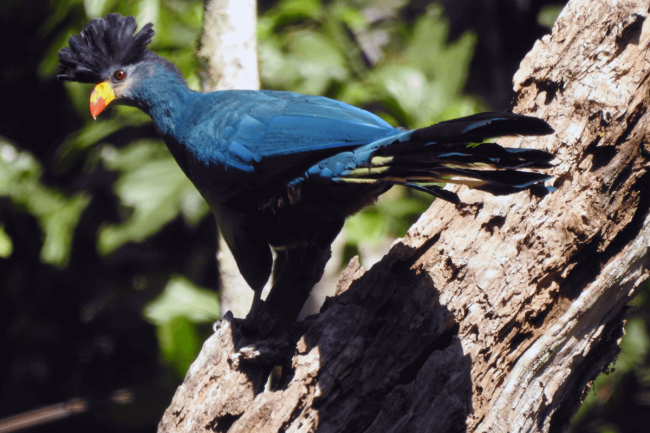Located in Uganda’s Great Rift Valley, Bwindi Impenetrable National Park spans 331 square kilometers covering three districts of Kisoro, Kanungu, and Kabale. This area is home to a diverse range of plants and animals. These include 160 tree species, 100 fern species, 348 bird species, 220 butterfly species, and 120 mammal species. Established in 1991, the park is adjacent to Virunga National Park in the Democratic Republic of Congo. It derived its name from the local term “Mubwindi,”. This name refers to the dense bamboo forest that once made the area impenetrable on foot.
Access Bwindi Impenetrable National Park by road and air. Traveling by road, the journey starts from the capital city Kampala, and takes about 9-11 hours through Mbarara city. From Kigali Rwanda, it takes about 4-5 hours only. Driving from Queen Elizabeth National Park takes 1-2 hours through the Ishasha sector with the sought-after tree-climbing lions. By air, a chartered flight is scheduled from Entebbe International Airport or Kajjansi Airstrip to Kihihi Airstrip located about 40 kilometers from the park. The flight duration is about 1-2 hours. Bwindi Impenetrable National Park comprises four sectors, the Buhoma, Rushaga, Ruhija, and Nkuringo sectors. Whereas the destination is well known for gorilla trekking, you have a better reason to explore Bwindi Impenetrable National Park.
Activities at Bwindi Impenetrable National Park
Batwa forest trail walk experience
This is one of the most memorable experiences in the Jungle. You need to spend the entire day in the forest, uncovering the origin and story of the Batwa pygmies. These were once wanderers and gatherers in the forest. The experience is done by an expert local guide rich in knowledge of the Batwa people. The tour explores the caves that the ancestors used as homes, the plants they used as herbs for medication, demonstrates hunting with traditional tools, and shows the trees from which they obtained barkcloth. The walk starts with meditation to call on the spirits of their ancestors to protect all hikers through the forest. As per the UWA Tariff of June 2024/2026, the Batwa trail charge is USD 100 for foreign non-residents and takes place in the Buhoma sector.
Nature walk
Having a nature walk is one of the most interesting ways of exploring the flora and fauna around the park. These hikes range between 1-8 hours, along the designated trails to see among primates, birds, and mammals. The Buhoma trail nature walk is in the northern part of the park with lush rainforest cover to the Nkuringo sector on the southern side. Other renowned hiking takes place on Ivy River Trail, a 7-kilometer walk with you encountering among others monkeys, colored butterflies, and several bird species.
The Kashasha trail hike takes about 4-5 hours through the forest on a 13-kilometer trail beginning at the Nkuringo sector. Munyaga River Trail is a 40-minute hike outside the park from Buhoma Road to Munyaga. Other recommended hikes include the guided long walks from Rushaga to Nyabaremura, and from the Buhoma to Nkuringo sector. The nature walks cost ranges between USD 30 to USD 50 for foreigners and UGX 10,000 to UGX 50,000 for East African residents.
Birding
Bird lovers can visit Bwindi to watch and take notes of over 348 bird species in and around the park. The park offers designated birding trails, including the Buhoma waterfall trail, Mubwindi swamp in Ruhija, the main trail, and the bamboo zone trails. The best months for bird watching are between November to April when the chance of encountering migratory birds is high. Some of the notable birds to look out for include the common bulbul, African blue, crowned hornbill, giant kingfisher, Kyiv gerund thrush, flycatchers, African emerald cuckoo, and lots more. Pack comfortable waterproof hiking boots, binoculars or telescopes, warm clothes, professional cameras, snacks, and water. One day may not be enough to identify all the different bird species thus we recommend spending more days in the different designated bird circuits.
The best time to visit Bwindi Impenetrable National Park
The park is open all year round. The best months to visit are June to September and December to March when the rains are low. This makes hiking conditions more favorable. Unless the decisions are made last minute, you should book your safari at least three months in advance.
In conclusion, besides Gorilla trekking, there are several other activities to do in and around Bwindi Impenetrable National Park. You can also combine your Bwindi experience with wildlife tours at Queen Elizabeth National Park, and Lake Mburo National Park and relaxation at the serene Lake Bunyonyi.

